By architecture of the city we mean two different things: first, the city seen as a gigantic man-made object, a work of engineering and architecture that is large and complex and growing over time; second, certain more limited but still crucial aspects of the city, namely urban artifacts, which like the city itself are characterized by their own history and thus by their own form.
—Aldo Rossi, The Architecture of the City (1966)
Merely to think about cities and get somewhere, one of the main things to know is what kind of a problem cities pose, for all problems cannot be thought about in the same way.
—Jane Jacobs, The Death and Life of Great American Cities (1961)
The real place of the improbable is the city.
—Manfredo Tafuri, Architecture and Utopia: Design and Capitalist Development (1973)
What exactly makes a city a city? For Rossi, Jacobs, and Tafuri, as for countless others writing about cities, the object of study is never quite defined. The city is an over-familiar category, poised between statistical research and everyday experience. We are surrounded by cities, our lives unfold there, and every reader has a series of stock examples ready at hand. More recently, runaway growth and technological change have rendered this familiar category unfamiliar: the city today is everywhere and nowhere. Cities vary tremendously across cultures and geographies, and over time. What links, for example, medieval Bruges with present-day Beijing? The city is an elastic category, perhaps by design; diversity and variability are intrinsic qualities of cities, and urbanity can take many different forms. The culture of the city has survived massive technological and social change. What makes the city such a robust construct? Is the human species hard-wired for sociability and exchange? And does this also suggest that the frictions that arise out of density and proximity are a fundamental—and productive—characteristic of city life?
When the city is defined more directly, size often appears as the first criterion. For Rossi, the city is a “gigantic man-made object […] large and complex and growing over time.” It’s a good definition, incorporating as it does scale, complexity, and change. But Rossi’s examples tend to be relatively small and traditional. He is not writing about contemporary megacities, and not even so much about the twentieth century metropolis. Padua, Seville, Nîmes, Berlin, Vienna, and London are just some of the names that appear in his text. When it was published in English, The Architecture of the City opened with a spread of Nantucket, Massachusetts, a small island town. For Rossi, the city is “gigantic” in comparison to a building or a person, and not in relation to either vast territories or contemporary infrastructural networks. I want to argue that while size is a key variable, it is by no means the defining characteristic of a city. If we imagine a scaled spectrum of human settlement patterns: camp/village/town/city/metropolis/megacity/megalopolis, where is the inflection point between the town and the city? And at the other end of the scale, what is left for architecture and urbanism when the scale of the city increases beyond legibility and coherence?
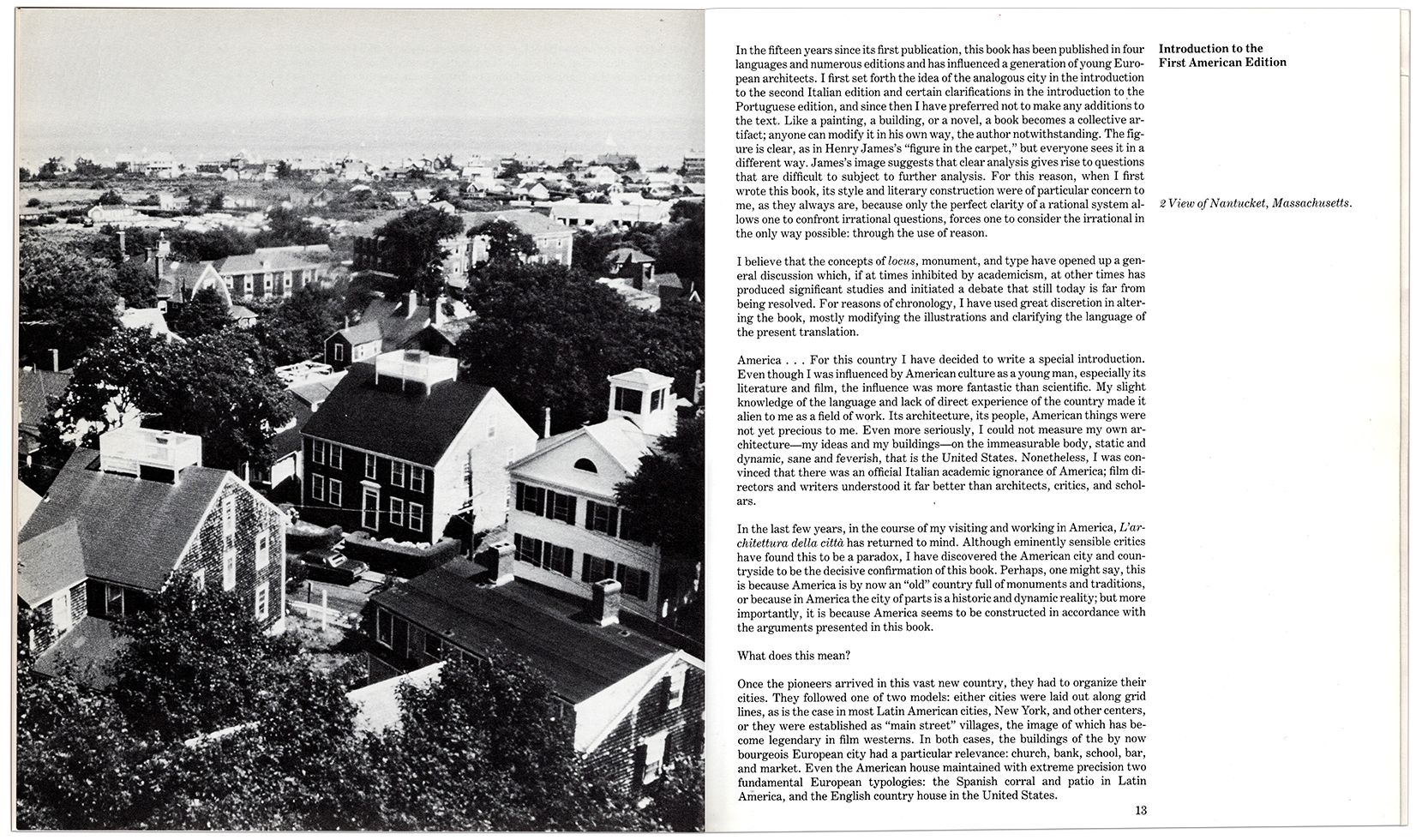
The rapid pace of urbanization over the past three decades has produced megacities of staggering size and complexity, most of these (with the exception of New York and Los Angeles) located outside of Europe and North America. In 1950, only Tokyo and New York qualified as megacities as defined by the United Nations Department of Economic and Social Affairs; in 2020, there were thirty-four megacities worldwide. Tokyo remains at the top of the list, followed by Delhi, Shanghai, São Paulo, Mexico City, Dhaka, and Cairo—all with populations of over twenty million.1 In China alone, there are five cities with populations over ten million. Architects are fascinated by the megacity and have produced huge quantities of research and documentation about the phenomenon. While there are clear benefits to dense urban development, megacities have also been marked by segregation and economic inequality, environmental degradation, overburdened infrastructure, and, as a result of their sprawling edges, longer commute times. The discipline of architecture has been powerless to offer practical proposals in the face of the intricate web of economic and socio-political forces shaping the megacity. Does it make sense for architects to persist in the naïve belief that they can have a meaningful impact on the megacity? If the proliferation of megacities is not a viable solution to the problems of global urbanism, then there is an urgent need for alternative strategies.
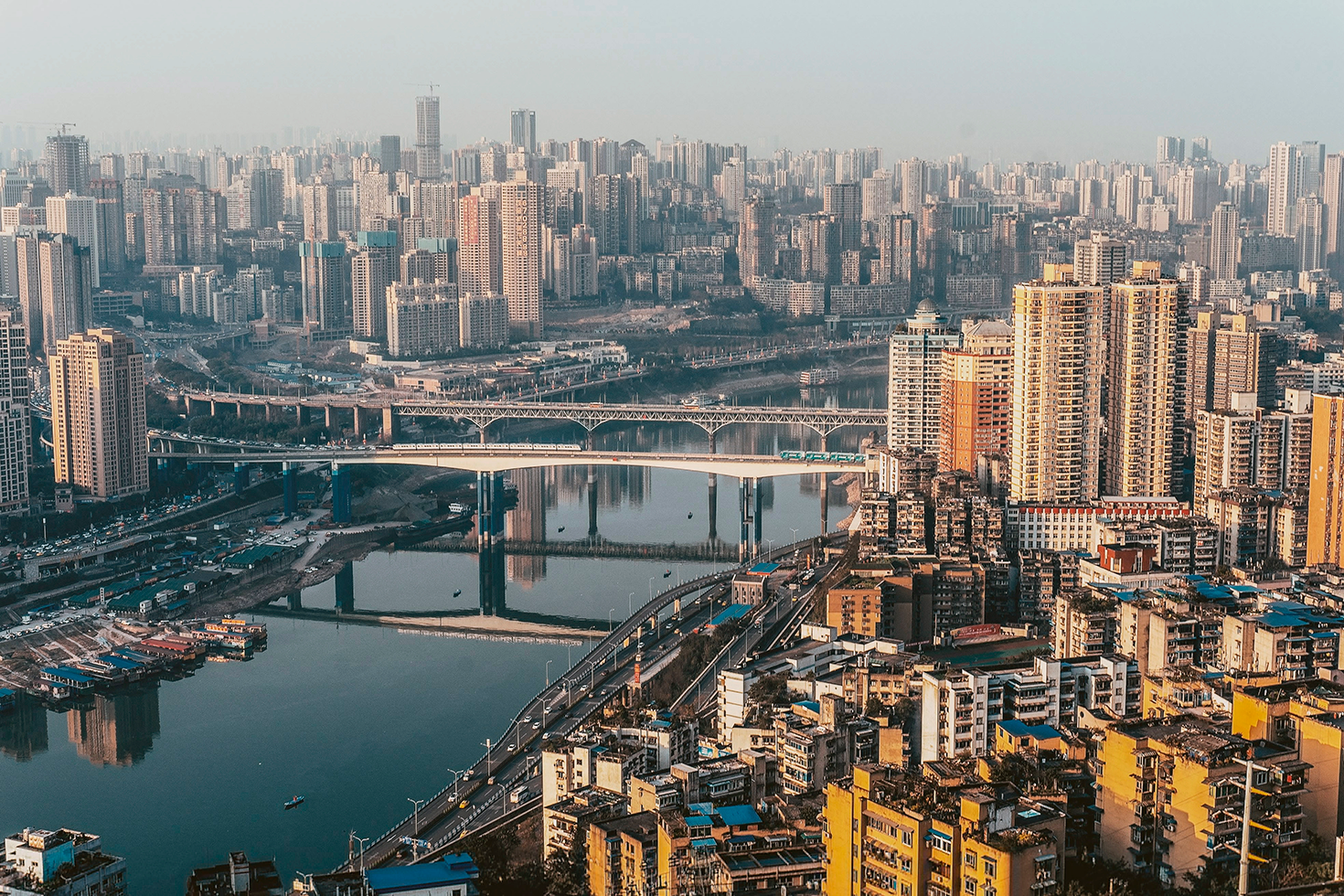
I would like to suggest that viable alternative options already exist and that they can be found somewhere around the inflection point between the town and the city: in what I am calling the microcity. It is worth pointing out that my interest in these microcities is local and anecdotal, motivated not by academic research but by personal experience. Here is a curious fact: Hudson, New York is a small city 120 miles north of New York City. Its population is well under 10,000 and, although Hudson is the County seat, the town of Kinderhook, twelve miles north, has a far larger population. Yet no one would mistake Kinderhook for a city; its buildings are spaced far apart, there is little commercial activity, and nobody walks. Hudson, by contrast, has a dense core of commercial buildings, townhouses, and a continuous street frontage, along with a diverse population and a vibrant street life of shops, restaurants, cafes, and hotels. The city functions as an economic hub for the surrounding countryside and has a continuous history of trading and exchange dating back to its eighteenth century origins as a whaling port. There is an emergent entrepreneurial culture, and the city today supports a working population of artists, writers, and musicians. It also has poverty, crime, and inequality: urban problems, in other words. It was Hudson that first suggested to me that an alternative to the megacity might be found at the opposite end of the spectrum, in very small cities that offer the many positive characteristics of urbanity without the attendant problems of runaway scale and urban sprawl.
In any given country, the number of very large cities is always going to be limited; smaller cities will always outnumber large by a substantial margin. This phenomenon, now known as Zipf’s law, was first noted by Felix Auerbach in 1913.2 In the United States, for example, there are ten cities with populations over a million, around one hundred between 200,000 and 1,000,000 million, and two hundred between 100,000 and 200,000 inhabitants. Moving even further down in scale, the Office of Management and Budget (OMB) has defined 536 micropolitan statistical areas: “urban aggregations with a core population between 10,000 and 50,000 and a positive integration of core and surrounding area.”3 Far more people in the United States live in small cities than live in Los Angeles or New York. At a time when small, local, and agile have become watchwords for innovation, the time has come for our discipline to rethink its preoccupation with “bigness.”
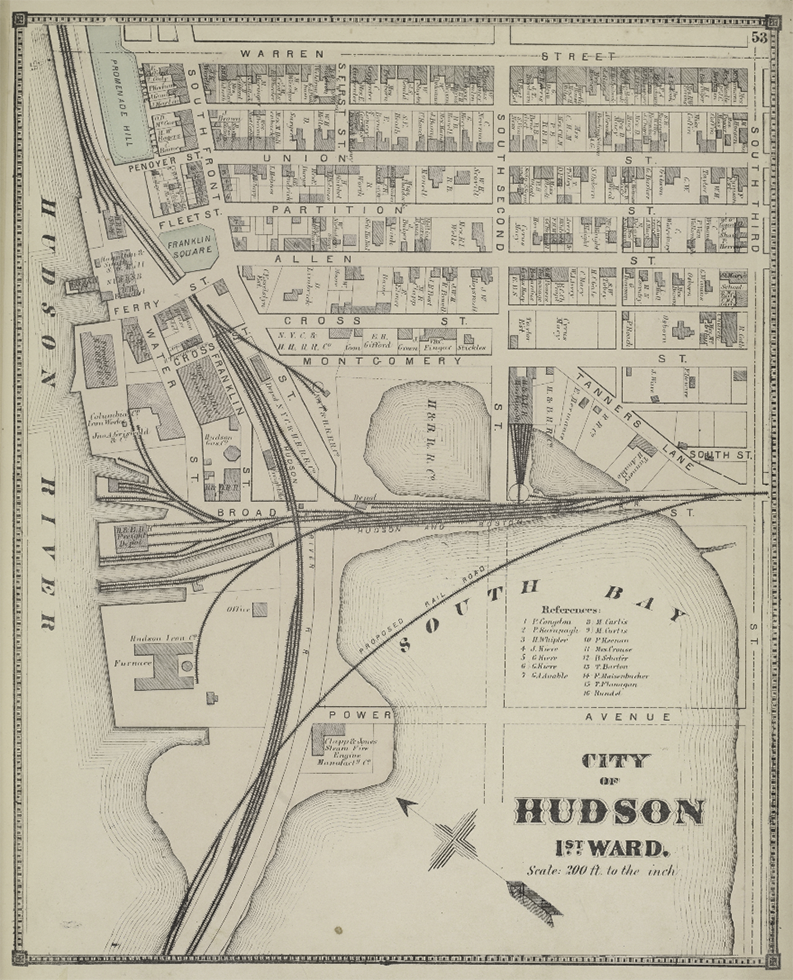
Looking for the moment exclusively at the United States, there is an ample field of study. A deep tension persists here between the urban and rural, traceable back to the competing visions of Thomas Jefferson and Alexander Hamilton: an agrarian nation of self-sufficient yeoman farmers versus an economy based in manufacture and commerce, clustered into cities and interconnected by transportation networks. The country’s geographic de-centralization means that even today population density is scattered; the 536 micropolitan statistical areas identified by the OMB are distributed throughout the country. Looking more locally, in the Hudson River Valley north of New York there are several once-vibrant cities, many of which suffered economic decline in the post-war period, but are now experiencing a revival and (particularly after the Covid-19 pandemic) seeing substantial population increases. A recent New York Times article placed Hudson and Kingston, New York (a nearby city of approximately 11,000) as first and second among the metro areas experiencing the largest growth over 2020 in the entire United States. Four other small cities in the region that experienced growth include Newburg, to the south, Catskill (directly across the Hudson River), and North Adams, in western Massachusetts. Clearly, these smaller cities are dependent on New York City as a proximate economic and cultural engine, but they are also gaining autonomy, which is tied to the fact that large cities have lost a measure of their cultural hegemony. Technology, a more mobile population, and the leveling effects of globalization have eroded the metropolis’ claim for centrality. In Hudson, on the other hand, the consequences have included both economic revitalization as well as housing shortages, particularly for low and moderate-income families, and pressure on overcrowded schools. In this sense, the pandemic functioned as a catalyst, speeding up a trend already in place and throwing a spotlight on both the potential and the pitfalls of a future shift towards a culture of microcities.

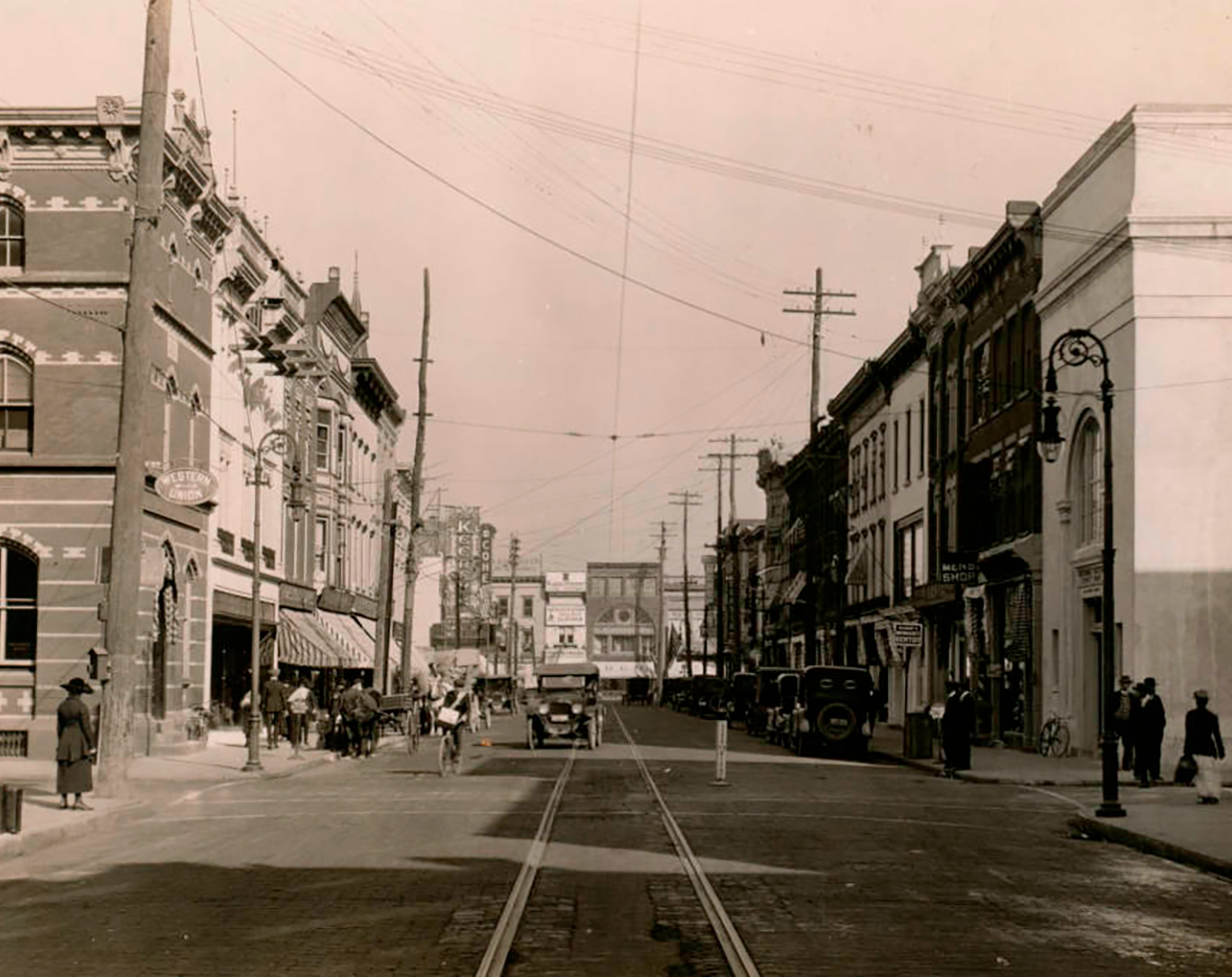
The characterization of a community as urban on the basis of size alone is obviously arbitrary.
—Louis Wirth, Urbanism as a Way of Life5
De-coupling urbanity from size provokes a series of questions: beyond scale, what are the essential characteristics that define a city? Are density, diversity, economic and personal mobility, together with intricate and differentiated social cohesion exclusively the properties of large cities? What specific forms of physical organization foster these positive urban traits? What is the specific agency of architecture to shape urban institutions and patterns of living? What is the smallest viable urban unit? And how can we refigure the relationship between the city and nature? Could a web of smaller cities offer the social, cultural, and environmental benefits of urbanism with a lighter ecological footprint?
Lewis Mumford’s idea that there is a definable, and distinct, “culture” of cities is a useful starting point. In his 1939 book The Culture of Cities, he defines the city as “the point of maximum concentration for the power and culture of a community.”6 Density and proximity engender economic and political power; but for Mumford, the city is not only a locus of power but also of self-awareness, critique, and reflection. The city, he writes, is at once a place where “the goods of civilization are multiplied and manifolded,” and the site of institutions that endow human activity and economic exchange with meaning: “the seat of the temple, the market, the hall of justice, the academy of learning.”7 This vibrant tension between power and culture means that cities can transform raw human experience into “viable signs, symbols, patterns of conduct, systems of order.” The city, Mumford writes, is the place where “the issues of civilization are focused,” and where “ritual passes on occasion into the active drama of a fully differentiated and self-conscious society.”8 This is a generous and optimistic vision that identifies the unique capacity of the city—as a concrete, man-made construct—to give form, not only to experience but also to the imagination. When Mumford speaks of “symbols, patterns of conduct” and “systems of order” he encompasses culture (viable signs and symbols), social life (patterns of conduct), and form: systems of order.
Mumford was a close reader of Patrick Geddes, and he is attentive to the relationship between the city and its larger ecological region. “The city,” he writes, “is a fact in nature, like a cave, a run of mackerel or an ant-heap.”9 In language that mirrors Geddes, he writes that “every phase of life in the countryside contributes to the existence of cities. What the shepherd, the woodman, and the miner know, becomes transformed and “etherealized” through the city into durable elements in the human heritage.”10 The consequence is that in the city there “arise greater possibilities for interchange and for new combinations not given in the isolation of their original habitats.”11 This is particularly relevant today when we necessarily understand cities not as independent entities, but as nodes within a larger ecological network. The microcities proposition does not imagine that these small cities could thrive today without the networks of transportation and communication infrastructure that allow them to interconnect with a larger region, and with other cities, both locally and globally.
In place of hyper-developed city centers and radiating sprawl, a focus on microcities proposes a distributed model of density that recognizes the complex interdependency of city and region. And while the proliferation of digital technologies has to some degree re-written conventional relationships between city and countryside, technology alone is not the answer. Only through creative imagination and the accumulated knowledge of the discipline—drawing on history as well as the present—will it be possible to imagine a dynamic network of microcities as a viable response to the social, economic, and environmental challenges of global urbanism today.
This proposition is not intended to be definitive; it is a working intuition and a roadmap for future study, local intervention, and speculative design. Cities are not the product of design; but they follow fixed patterns and repeat certain forms of organization, the result of laws and policies as they intersect with a complex ecology of finance, ambition, and patterns of behavior, both collective and individual. The form of the city is a product of contestation and consensus, and fundamentally democratic.
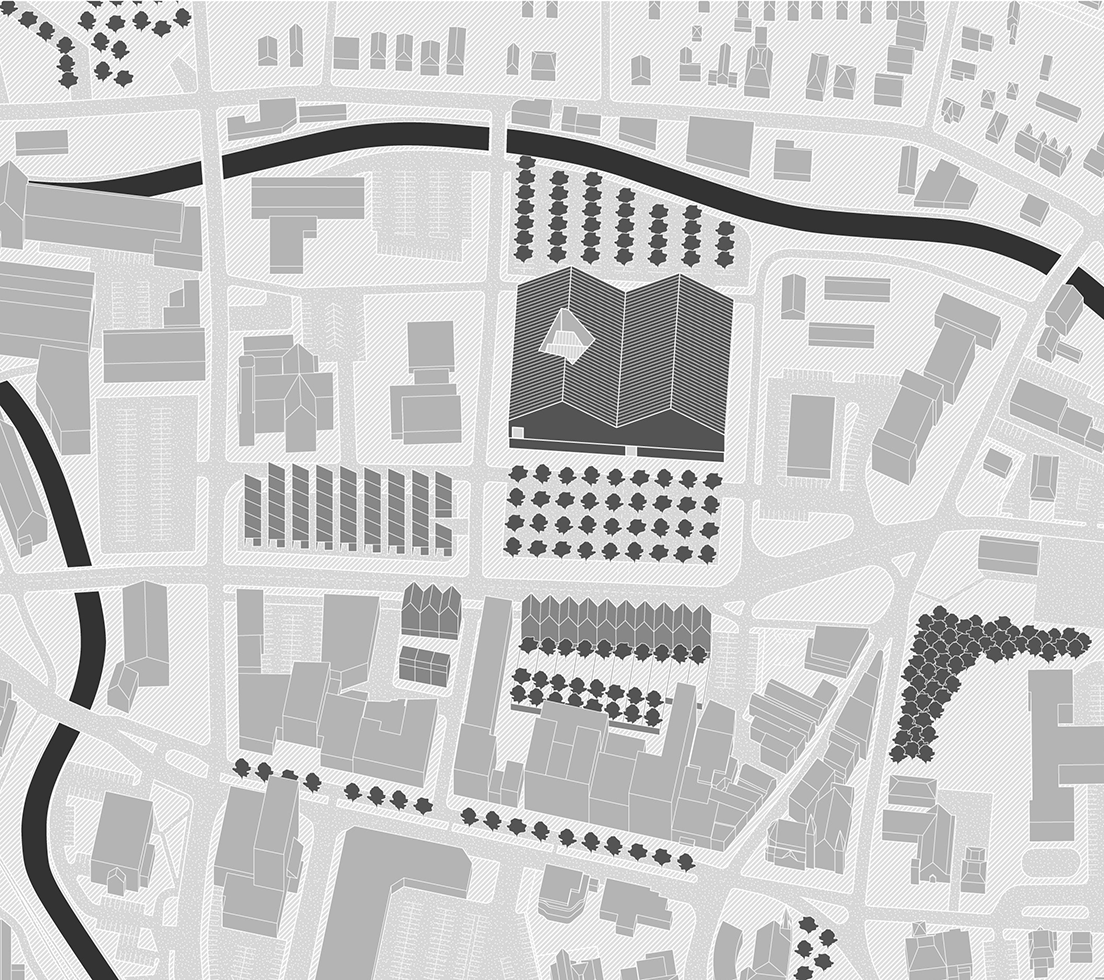
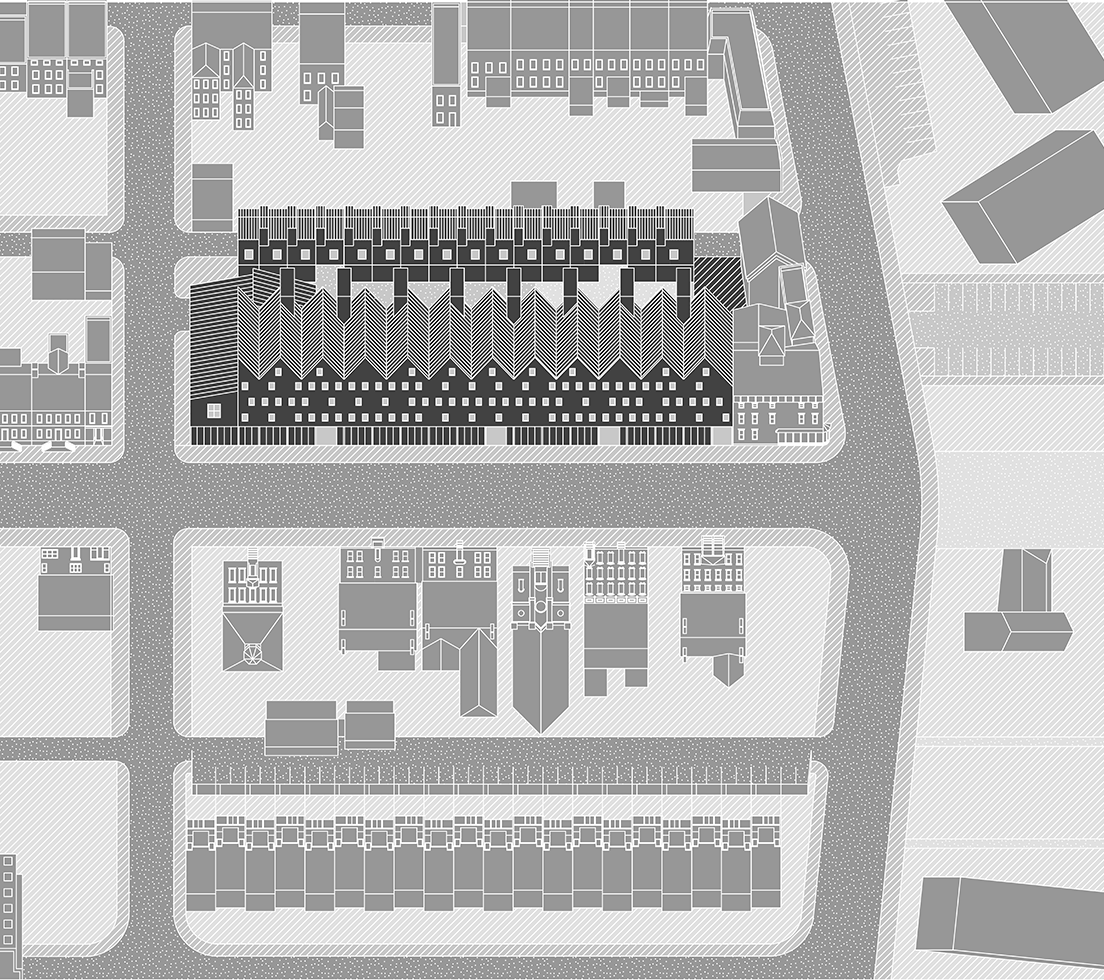
Postscript
Five Points Toward a Culture of Cities:
1. Density outweighs size. From density—the daily, close contact with anonymous strangers, as well as the concentration of walls, streets, rooms, and squares that mark and delimit physical space—flow all of the characteristic social effects of the city: “density involves diversification and specialization, the coincidence of close physical contact and distant social relations, glaring contrasts, a complex pattern of segregation, the predominance of formal social control, and accentuated friction, among other phenomena.”12 Cities bring the public and private into often uncomfortable proximity. The “culture of congestion” is not exclusively a product of the modern city; nineteenth century accounts of the city, or historical records of life in pre-industrial cities, record a churning mix of people and spaces and a boundary between public space and private life in constant flux.
2. Cities are not only physically dense, they are also information-dense: At the beginning of the twentieth century, when the metropolis was still an emerging phenomenon, Georg Simmel observed an “intensification of emotional life due to the swift and continuous shift of external and internal stimuli” associated with life in large cities. “It is the function of the metropolis,” he wrote, “to make a place for conflict.”13 It is a paradoxical statement that at once articulates a deep feeling for the discontinuity inherent in urban experience, and at the same time, assigns a positive value to conflict itself. In a society changing rapidly, Simmel suggests, the city both stages conflict, and in so doing, creates the conditions to absorb and manage the inherent conflicts that modernity creates. The city is at once the paradigmatic product of modernity, and at the same time, an ancient form that allows us to come to terms with these new realities. In the city, old patterns and rituals persist at the same time as new rituals are invented, enabling Mumford’s “active drama of a fully differentiated and self-conscious society” to manifest in different forms among different populations. Difference is the engine that drives urbanism. As the artistic avant-gardes of the last century understood very well, cities are places where diversity and otherness thrive. The city is the most concentrated artifact of industrial production, and it is in the metropolis of the early twentieth century where the fracturing and disintegration of public space and class norms become most evident. And yet precisely what is interesting about the city is that it is a place where meaningful difference and local discontinuity exist within a framework of overall coherence. Cities are legible, orderly mechanisms, that continue to serve the inhabitants who live and work there, while they also sponsor cultures of contestation, alternative lifestyles, and minority populations.
3. Cities and citizens thrive on mobility. Mobility means freedom of movement as well as freedom of access and mobility across social categories: the intricate, interlinked flows of individuals, goods, capital, energy, and information in the city. This is not only an effect of concentrated infrastructure networks, but also the freedom from fixed social categories: “heterogeneity tends to break down rigid social structures and to produce increased mobility, instability, and insecurity, and the affiliation of the individuals with a variety of intersecting and tangential social groups with a high rate of membership turnover.”14 Cities are also the most intensive producers and consumers of new technologies. Urban density and access to transportation networks provide access to expanding markets. The concentration of craft production and later, manufacturing, created competition, which in turn kindled innovation. The city has always been a machine that runs on mass media. Newspapers originated in the city and, before that, banners, handbills, and broadsheets broadcast information to a mass audience. Even today, cities remain an oasis of face-to-face communication. Access to information and its rapid dissemination have come to characterize urban life, which in turn enables social mobility, and in a productive cycle, generates more information.
4. Each city is intricately embedded in a larger ecological region. The city functions as a locus of density, and a place of exchange, concentrating people, goods, and services from a surrounding region. It seems to me that for this reason, the city needs an edge: a place where the countryside stops, and the city begins. Traditionally as urban growth pushes against a geographic boundary—a river, mountain range, or seashore—density results. The island city of Manhattan is a paradigmatic case. This is, of course, a line that has now been blurred for over 100 years, to the detriment of both city and countryside; but it is also true that smaller cities tend to have better-defined edges. It also follows from this that cities need a sense of identity and coherence—a coherence that arises from density, fixed edges, and above all, architectural quality and consistency. A large part of Hudson’s success, I would argue, is the direct result of the high quality of its (mostly anonymous) architectural fabric.
The collective identity of the city is also based on a shared service infrastructure: streets, squares, and markets; power, water, and sanitation. Mumford notes, for example, that the limiting factor to the growth of the medieval city was not its walls, but water supply, access to produce, and transportation—this is one reason for the early success of cities on rivers or seaports.15 Parallel to this a legal and institutional infrastructure: banks, schools, and courthouses, as well as cultural and religious institutions, are consolidated into cities. The city is identified with the regulatory power of banks, schools, and the legal system, but people are also drawn to cities to participate in collective rituals—once primarily religious, today more creative and cultural, but always collective. No matter how obscure your subgroup, you can find like-minded individuals that share your identity.
5. The city is a site of contestation, minority populations, and collective creativity. This is the necessary counterweight to the idea of the city as the seat of power; resistance is the inevitable response to the exercise of power, and cultures of resistance, alterity, and creative adaptation are most concentrated in urban areas. The nature of the city, and its diverse populations, are hard to control or predict. Metropolitan culture ruthlessly tests individuals. Only those who can adapt survive. In addition to individuals, neighborhoods, districts, and entire cities grow and change, sometimes disappearing altogether. Cities are living entities, subject to the same laws as the rest of the natural world. In part because of this competition, cities are a place of social innovation: they produce new forms of life and new lifestyles. This is one of the great pleasures of city life: its ability to constantly surprise.
Stan Allen is an architect, theorist, and former dean of Princeton University School of Architecture.